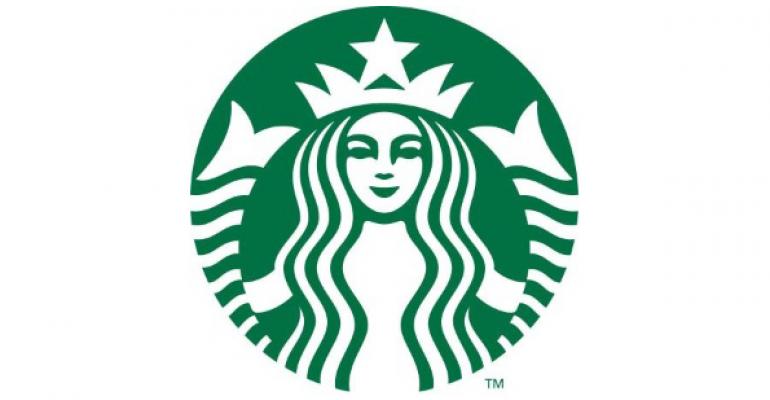
Starbucks Corp. will expand mobile ordering and payment to more than 600 locations in the Pacific Northwest in the coming months, with plans for a national rollout later in 2015, the company said Thursday in a call discussing first-quarter earnings.
The rollout began in December with the introduction of mobile ordering and payment at 150 units in Portland, Ore. The response from customers has been extremely positive, said Howard Schultz, Starbucks chairman, president and CEO.
In Portland, the experience for customers using the app and the operational execution by employees has exceeded expectations, said Adam Brotman, Starbucks’ chief digital officer. “So we are full steam ahead in terms of rolling this out around the country,” he said.
Starbucks’ commitment to digital was further underlined by the company’s appointment this week of board member Kevin Johnson, a former technology executive, as president and COO, replacing Troy Alstead, who begins a sabbatical on March 1.
During the first quarter, Starbucks recorded its most successful holiday season in its 40-plus-year history, Schultz said. He credited the “re-imagined in-store holiday experience” that integrated food and beverage innovation with Starbucks’ digital initiatives and its popular My Starbucks Rewards loyalty program.
Same-store sales in the Americas region, dominated by the U.S., rose 5 percent for the quarter ended Dec. 28, including a 2-percent increase in traffic. In the U.S., transactions rose by nearly 9 million, compared with a year ago.
The Chestnut Praline Latte was one of the chain’s most successful limited-time offers ever, Schultz said, and food contributed about 2 percent to the 5-percent increase in comparable sales in the Americas during the quarter. Breakfast sandwich sales increased 29 percent during the quarter, and lunch sales rose 15 percent, in part due to new warm sandwiches.
The expanded selection of Starbucks gift cards was also successful. Customers added $1.6 billion to cards in the U.S. and Canada, a 17-percent increase over the prior year. Roughly 2.6 million Starbucks cards were activated on Dec. 23 alone, Schultz said.
The My Starbucks Rewards program added almost 900,000 new members during the quarter, bringing total membership to more than 9 million, or 23 percent more than a year ago.
“We are already seeing and realizing the benefit of increased activity in our stores as gift cards received over the holidays are redeemed,” Schultz said. “My Starbucks Rewards is one of the most important business drivers, as new members contribute not only short-term increases in revenue and profit, but also long-term loyalty for years to come.”
Delivery in second half of 2015
(Continued from page 1)
The loyalty program is expected to grow with the rollout of mobile ordering and payment, Schultz said.
“Our experience to date confirms that once fully rolled out, mobile order and pay will drive significant increase in mobile payment transactions in our stores overall and have a flywheel positive effect on our overall business, driving both increases in My Starbucks Rewards membership and app usage, and creating significant additional one-to-one marketing opportunities,” he said.
Schultz said more than 13 million customers are actively using the mobile apps in the U.S. alone, including a digital wallet app linked to a loyalty card that allows customers to pay using their smartphones in stores. The chain is averaging more than 7 million mobile transactions in units each week, representing about 60 percent of total tender.
Mobile ordering and payment also opens the door for the next step in Starbucks’ strategic plan. The company plans to offer delivery in the second half of 2015. The service will likely be available in two formats: Green Apron delivery by Starbucks employees or delivery via third-party service.
Starbucks is also exploring smaller, alternative unit formats that Schultz said respond to the “continued urbanization of retail.” Pilot express locations will launch in New York and offer a streamlined assortment of food and beverages, which will leverage mobile ordering and payment features to offer faster, more convenient service, he said.
The company also plans to open a second location of its premium Starbucks Reserve Roastery and Tasting Room in the U.S., although Schultz did not indicate where. The first location opened in Seattle during the first quarter, and Schultz said the response from consumers has been overwhelming.
“Personally, I feel the Roastery is the finest, most creative and immersive experiential retail environment of any in the world today,” Schultz said. “There should be no coincidence that the Roastery opened in the same year that we identified and shared with you the urgent need for retailers to elevate, deepen and ultimately redefine how they were emotionally connecting with their customers.”
The Roastery’s small-batch coffees will also eventually be available at about 1,500 Starbucks locations. A Roastery is scheduled to open in Asia in 2016, and Schultz said the brand could eventually reach 100 units.
However, Starbucks will likely suffer somewhat from an unfavorable currency exchange this year, officials said. And Target is closing its retail stores in Canada, where Starbucks had 132 licensed units. Schultz said the closures were not expected to have a material impact on Starbucks’ results.
This story has been revised to reflect the following update:
Update: Jan. 23, 2015 This story has been updated to include additional information about Starbucks' mobile app.
Contact Lisa Jennings at [email protected].
Follow her on Twitter: @livetodineout





